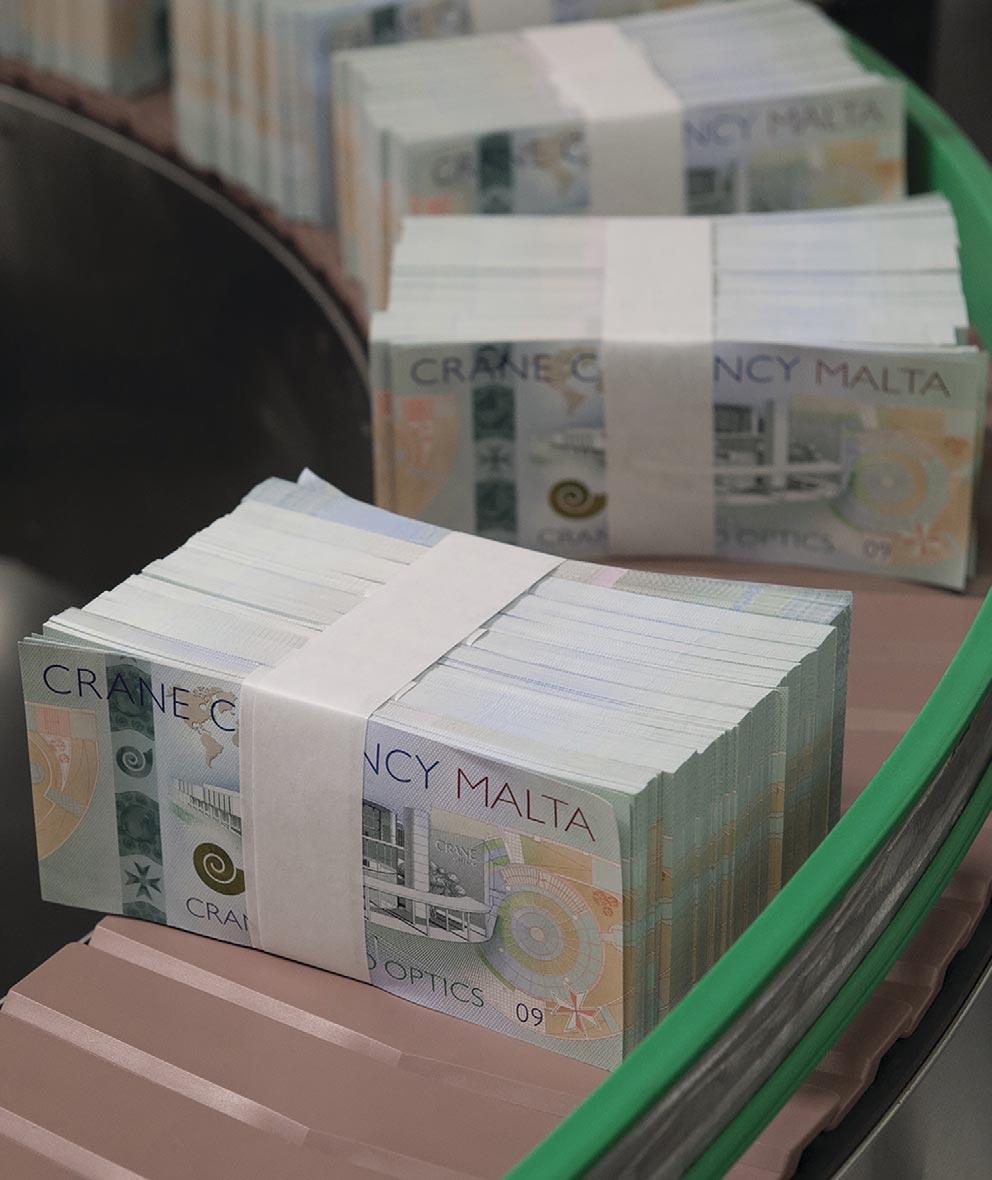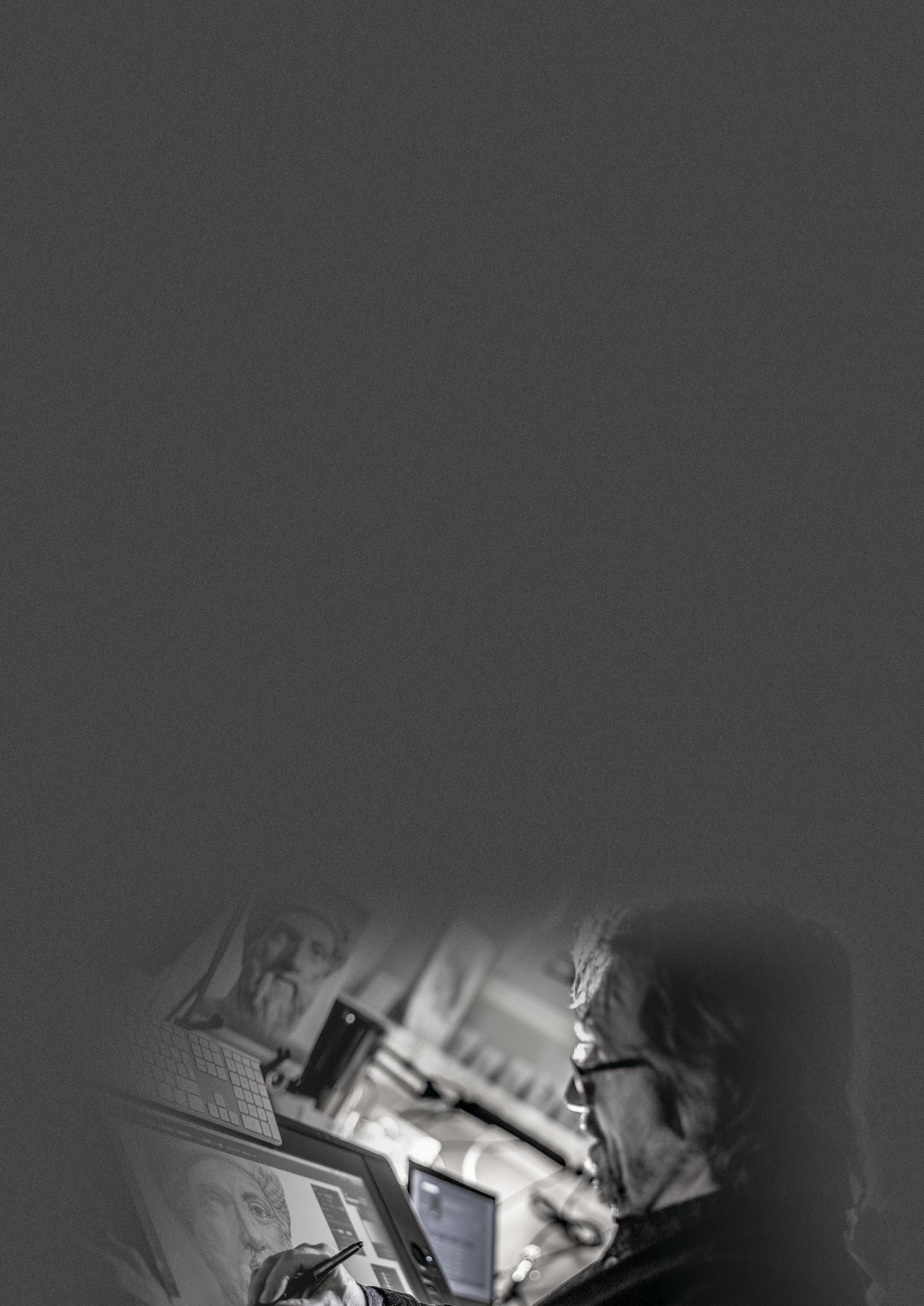



CRANE CURRENCY AN ILLUSTRIOUS LICENCE TO PRINT powered by Inside Sustainability inside-SUSTAINABILITY.com Inside sustainablity 1 want an article created? apply here
CRANE CURRENCY I PROFILE
With over 250 years of history, Crane Currency is a leading name in the production of currency for central banks worldwide. The company’s hightech portfolio of security products, paper technologies and comprehensive services places it firmly within a small elite group servicing the world’s central banks.
But with the rise of digital payments and online banking, what is the future of paper currency? Director of Operations and Managing Director of Crane Currency in Tumba, Sweden, Sixten Jansson spoke to Richard Hagan about why the company remains positive about the future.

2 Inside sustainablity
Crane Currency can uniquely trace its roots all the way back to 1755 with the paper mill at Tumba, Sweden, and 1775 and the famous American patriot Paul Revere.
During the American War of Independence, Paul Revere used his talents as an engraver to produce the printing plates that would produce the very first versions of US paper currency.
Those notes were printed on paper supplied by Stephen Crane – the sur name that is now immortalised in Crane Currency’s name.
Decades later, Stephen Crane’s son Zenas – who’d learnt the art of currency papermaking from his father – opened his own printing mill in 1801, supplying paper primarily to banks, printers and shopkeepers.
Zenas Crane’s sons, Zenas Marshall and James Brewer, would ultimately join the company, too. The two pioneered a method for embedding silk thread in the banknote paper as a means by which to mark the denomination of
a note. It was a major step forward in preventing fraud, especially in com bating paper note value alterations.
In 2002, the Swedish Central Bank (Sveriges Riksbank) decided to out source its banknote production to Crane Currency. When the cooperation was announced, Crane Currency took over the Riksbank’s Tumba Bruk, which had manufactured paper, banknotes and security documents since 1755, making it one of the world’s oldest mills of its kind.
Today, combating fraud and the ongoing development of innovative and complex security solutions for paper currencies are core activities at the company, but they’re not the only ones.
Comprehensive currency solutions
“The core of our business is papermaking, banknote printing and the technology that we use to stop counterfeiting,” outlined Sixten Jansson, Director of Operations and Managing Director of Crane Currency in Tumba, Sweden. “More recently, we’re

Inside sustainablity 3
CRANE
also present in the authentication market for consumer products.”
Crane Currency is one of a small handful of manufacturers who are able to supply the full bouquet of materials and services to produce a given banknote for central banks around the world.
In early 2000, the company expanded its footprint from its original base in the United States to an international one. It now has a total of five sites and facili ties that come together to produce its currency orders.

In Sweden, Crane AB produces the paper for the currency, which is then
shipped to its modern printing works in Malta – where the currency is printed –and to other external banknote printers around the world.
During the paper manufacturing process, the banknotes receive their weaved-in security thread, which is a feature typ ical of modern currencies and which is produced by Crane Currency’s Nashua facility in New Hampshire. The micro-optic technology is developed by the R&D team in Alpharetta, Georgia.
The company’s other stateside facility, based in Dalton, Massachusetts, exclu sively manufactures US dollar currency and some US passport papers. The other function of the Dalton site is its paper and raw materials R&D centre where an ongoing study of paper longevity, enhancement and sustainability is conducted.
Where central banks require assistance with design work for currencies, Crane Currency’s Swedish headquarters has a design office that is able to assist with those requests. The design team also span across the Hal Far, Malta site, the first commercial banknote printing facility to be built in several decades. The 14,000 sqm facility features the industry’s most modern printing equipment capable of producing the latest security features.
CURRENCY I PROFILE
Staffing and facilities
Crane Currency has just over 1,100 staff spread throughout its global offices. Its biggest site in terms of staffing –or associates as they’re known in the company – is its printing facility in Malta with around 400, followed by its Swedish office with around 250. Its Dalton facility has about 300 and Nashua about 100. Due to the high demand of micro-optic features integrated into paper by Crane Currency as well as its competing paper mills, Nashua is now the fastest growing Crane facility and is expected to grow by 50% in 2022. Its smallest office is its Alpharetta design office with 50 associates.
The company is especially proud of its printworks in Malta, as underlined by Mr Jansson: “We have the most modern banknote printing line in the industry. It’s a brand-new site that we built in 2018. We’re very proud of it and the equipment that we’ve got set up there, as well as for the fact that it’s a greenfield site which in this mature industry is very unusual.”
High tech solutions for modern challenges
For obvious reasons, modern banknotes require constant investments in security technology. For several years, Crane Currency’s teams have developed a range of security products that are so complete that the company has since successfully sold them into the consumer products market for brand authentication purposes.
Mr Jansson explained: “We’re very proud of inventing and implementing micro-optics first into banknotes and then into various consumer products. We currently have about 100 banknotes worldwide utilising micro-optics, which we’ve achieved in only 15 years. It began with the first ban knotes we produced in Sweden with embedded micro-optics in 2006, and since then it’s seen high growth.”
The micro-optics referred to is a tiny, high-definition image that, when viewed from different angles, appears to move or animate in a specific, pre-designed way. Each micro-optic feature is unique to that

Inside sustainablity 5


6 Inside sustainablity

customer’s product and its movement is visible across multiple axes of rotation and in all lighting conditions.
Outside of banknotes, manufacturers of consumer goods have utilised the com pany’s micro-optics as a seal of authenticity, allowing customers to immediately distin guish original goods from counterfeit ones.
“This technology is a big part of what’s driving the business for us,” noted Mr Jansson. “Both on its own as well as inte grated into paper or a banknote. Being a market leader in this type of simple recogni tion that makes things difficult to counter feit, creates its own demand. As customers see the benefit of it, it becomes a solution that more companies want to use, espe cially as hologram-like features have become so commonplace.”
But security is not the only challenge that banknotes must face within the marketplace.
The importance of endurance A less obvious challenge that banknotes must address is endurance. Banknotes, Mr Jansson emphasised, have to be durable.
“Banknotes must be built so that they don’t have to be removed from circula tion too early.”

The central bank in Sweden experienced the endurance problem with the initial ver sion of the Swedish 20 Krona note – which had a problematically short lifetime of six to nine months due to its heavy use. To solve the problem, Crane Currency added a spe cial endurance product leveraging the research and development conducted in its US-based paper making facilities.
“The notes have to be able to deal with dirt, sweat, and not being kept in wallets. T hey must withstand environments of heavy use,” Mr Jansson asserted. “We then developed our special anti-soiling treatment, using different mixes of cotton to build a very strong and durable note. By doing that, we could expand the lifetime of that note by two to three times.”
Interestingly, that endurance product utilises cotton-based waste products from the textile industry as its raw mate rial, making it uniquely sustainable.
Social responsibility Crane Currency has an extensive philan thropic program that donates to various important causes. With ties to a $1 million dollar endowment established by Richard Teller Crane in 1904, the Widows and Children fund today provides annual
8 Inside sustainablity
financial awards to vulnerable popula tions living in the communities in which Crane operates, with most of the awards made to organisations directly nominated by Crane associates.
“In every currency site, for the past three years it’s become an important part of our operations to donate to the communities there,” Mr Jansson remarked.
In addition to financial donations, Crane Currency’s associates are also encouraged to donate their time to supporting their local communities in organised programs such as cleaning up neighbourhoods.
On the future of paper currency
Looking ahead to the future of the industry, Mr Jansson’s position was clear: despite the increasing popularity of online purchases, paper banknotes are here to stay.
“Many societies still trust banknotes more than digital solutions. That trust is impor tant and must still be built and kept. During the pandemic, the demand for banknotes has in many countries increased. Today, the majority of nations’ banknotes,
especially high value banknotes, are seen as a safe store-of-value.”
He highlighted two recent crises as case studies evidencing the continued need for currency in economies.
“As a crisis product, currency is important. Recently, hackers disabled a major Swedish grocer – they weren’t able to accept card and electronic payments. It reminded people of the need to at least carry some cash. Additionally, the pandemic has high lighted various situations where you need cash. It’s helped people get through the pandemic and it’s protected businesses and individuals.”
With the need for cash firmly entrenched i n society, Mr Jansson explained that the future of banknotes must centre around tighter, better quality security solutions.
“The industry is demanding that ban knotes contain more security features that are easy to recognise and which don’t take up more space on the note.
There’s a lot of emphasis on the protec tion of high-value notes in particular, and that is precisely where our micro-optics solutions come in,” he concluded. n

Inside sustainablity 9
















